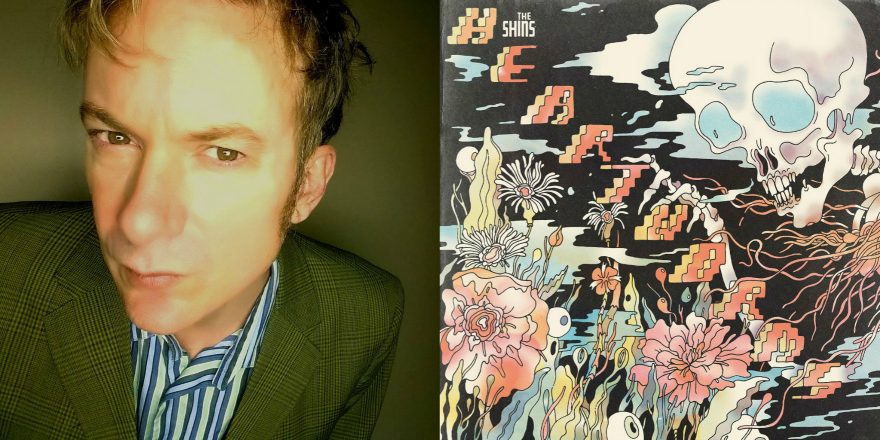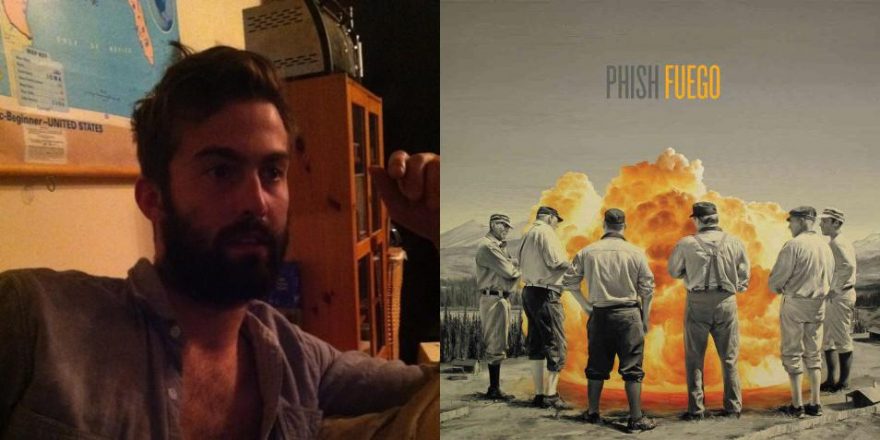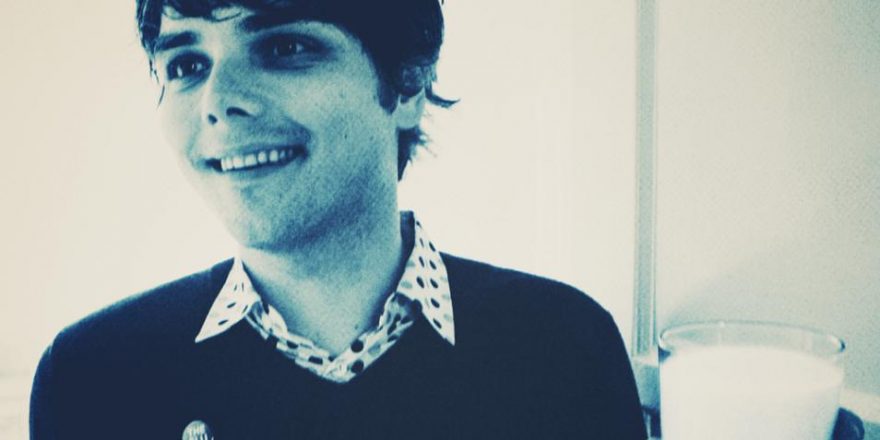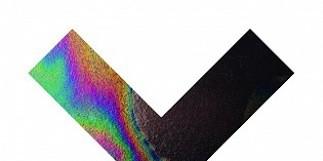I was on tour, flipping through my phone in a van in northern California, when I came across a blurb that referred to Squeeze as a new wave band. This puzzled my band mates and me and got us talking about what it could possibly mean. When I think “new wave,” I get a mental picture of Blondie, the Cars, the Pretenders — acts from a certain era and even a certain place: CBGB in New York City. What binds all those acts together is harder to define. Synthesizers? Slick production? Nihilistic lyrics? Tight pants? As soon as you try to define “new wave” in superficial terms, there are endless counter-examples that render the definition useless. In the many years that have passed since the late ’70s, popular music has swallowed up all the elements that once made “new wave” a meaningful descriptor, and in retrospect it’s hard to believe that we used to think Elvis Costello and U2 were part of the same movement.
But like my grandfather used to say, put a bunch of musicians in a van for twelve hours and you can figure out anything. Specifically, that conversation solidified my conviction that the Shins are a new wave band — not because they particularly embrace the superficial elements of the genre, but rather the melodic ideas that were a byproduct of that era’s new technologies. It was true early in their career and remains the organizing principle on their new record, Heartworms. Let me explain.
One could argue (and I will) that before the late ’70s, the melodic phrasing common to most pop music mimicked the rhythm and cadences of human speech.
Like the electric guitar before it, the synthesizer was once a brand new form of expression, and it’s hard to overstate its impact on the way writers approached their craft. One could argue (and I will) that before the late ’70s, the melodic phrasing common to most pop music mimicked the rhythm and cadences of human speech. Rock music came from the blues and folk, both conversational forms that grew out of narrative traditions, and whose appeal depended largely on storytelling and/or relatability. And despite its game-changing history, the electric guitar, when not providing rhythmic backing or blunt power, didn’t really change this approach. It “sang,” “wailed” or “cried.”
By contrast, new wave brought us “Candy-O” by the Cars and “Antmusic” by Adam and the Ants, just to name a couple of tracks: erratic, non-conversational songs with distinctly stilted melodies. It took some work to extract the human element from a melody that sometimes sounded like it could have been generated by an algorithm. New wave’s disembodying, alienating aesthetic made the human voice just another mechanical element in the song’s pulsating arithmetic — the singer just another functioning cog among all the other gears, a part of the machine. This effect could be exaggerated with various production techniques, including doubling the lead vocal with another vocal or a synthesizer. Sometimes the singer was made to sound literally like a machine by using combinations of phasers, tremolos and delays. Science fiction had long obsessed over the interplay between computers and the human mind, and the arrival of new wave brought this conversation into popular music.
What had been a barrage of seemingly unrelated dark imagery devolves into an existential, minimalist pronouncement from what sounds like a depressed robot.
While this aesthetic dominates the new album, the Shins have played with it from the beginning. “Caring Is Creepy,” the first track on 2001’s Oh, Inverted World, could have come out in 1982. Its melody unfolds like a Markov chain, the heavily processed vocal rebounding scattershot over a fairly traditional progression delivered in irregular bits. In place of a chorus, the whole thing grinds to a near stop while James Mercer’s voice bleeps, “All these squawking birds won’t quit/Building nothing, laying bricks.” What had been a barrage of seemingly unrelated dark imagery devolves into an existential, minimalist pronouncement from what sounds like a depressed robot.
The song that most caught my attention on that record, though, was “New Slang.” Wedged between two pretty, kinetic numbers, it stood out for its intimate delivery and folky sensibility; the lovely melody is less restless but still measured out in irregular patterns. I wonder now if I would have heard this song the same way had it not been a breather in the middle of an album that overall felt like strenuous exercise.
Chutes Too Narrow (2003) was a slicker recording that revisited many of the same ideas but expanded the palette a bit with a reggae groove (“Saint Simon”) and a country song (“Gone for Good”). It’s worth noting that Mercer’s voice in the upper register is so clear and resonant that even a lonely old country ballad can come across like a national anthem.
If you use the machine, are you saying something different?
There are lots of real drums on the first few records, although over the years it seems Mercer started relying more on programming — or at the very least overlaying a recorded kit with samples. It’s not always easy to tell when recording technology now allows for quantizing and manipulating real audio in the same way you could treat MIDI information years ago. But this raises an interesting point: if you record a drum kit and make it sound like a machine, why not just use the machine? If you use the machine, are you saying something different? What if you’re using a machine and trying to make it sound like a real drummer? Does the process matter? Maybe it’s just faster to have a drummer learn the song than to slog over a sequencer and program it yourself. Moreover, can non-musicians even tell the difference? Does that matter? With everything on the radio quantized to hell, will future teenagers even understand what made the Muscle Shoals rhythm section so great? Or will the very idea of playing “in the pocket” slip from the public consciousness? Questions for the next twelve-hour van ride.
Heartworms is an album full of programming. The synths have taken over, at times to great effect. Mercer produced all but one track himself, and my conjecture, offered without evidence, is that this record was born of hours of his own effort in front of a computer. On first listen, I kept thinking of Julian Casablancas’ 2009 album Phrazes for the Young, which left me with the same impression. Casablancas’ band the Strokes made some of the grittiest, most compelling rock albums in recent memory, but what happens when you take the guy out of the band? Phrazes sounds like what would happen if you played IBM’s Watson all the Strokes’ albums and asked it to make its own. And in a home studio, electronic instruments are literally the path of least resistance; a synthesizer can be recorded directly, without mics and amplifiers. You don’t have to worry about noise bleed or preamps, since it’s all “in the box.” You can also try out a near-infinite variety of artificial sounds with the click of a mouse.
In its best moments, Heartworms embraces the machinery.
In its best moments, Heartworms embraces the machinery. “Painting a Hole,” which really, really recalls early Echo and the Bunnymen, is built on a relentless cycle of throbbing industrial keyboards and clanging chimes, staccato guitar chops, hand claps and high swooping horror-movie shrieks. Mercer howls over the rumble like he’s struggling to be heard, the minimal melody less important than its anguished delivery. He sounds like a panicked hostage, the pilot of some giant steampunk bulldozer he’s lost control of. It’s exhilarating and exhausting, and it wouldn’t convey the same idea had it been played on traditional instruments. The computer as musical instrument is most effective, in my view, when it calls attention to itself.
Many of these motifs reappear on “Dead Alive,” a 6/8 number also built on a loop of pounding synths and drums. Unlike “Painting a Hole,” however, the melody and lyrics seem to hold the focus, and the haunting chorus (“So tonight/Dance and cry/the dead alive”) gave me visions of maypole dancing straight out of the 1973 movie The Wicker Man.
“Mildenhall” is an autobiographical tale of living on an overseas air force base as a teenager and bonding with friends over music. Plucked out intimately on an acoustic guitar, the song is rounded out with a faraway clacking drum loop and some spacey keyboards. It features Mercer at the low end of his vocal range, and it’s slow and sparse enough that you can hear the words as they clop on by. This really grabs your ears, as with most other Shins songs there’s so much syncopation and odd rhythm in the rapid-fire phrasing that it tends to hit your gut before it hits your head. In “Mildenhall” there’s a nakedness to the song’s meaning; in its literalness, it sits oddly alongside the rest of the album.
Elsewhere there are synths evocative of the Cars circa Heartbeat City, such as on “Half a Million” and “Fantasy Island,” although by 1984 FM pop had wholly absorbed those shiny synth sounds and gated snare drums. So what’s going on when you dress up one of your intelligent, catchy-as-hell songs in hairspray and Spandex? “Fantasy Island” is undoubtedly smarter and more interesting to me than “Broken Wings,” but they’re hanging out at the same bar. Some young bands I’m particularly fond of (Miniature Tigers and Pop Etc.) have recently gone down the same road, so at this point maybe we have to call it a movement. I’ve read some compelling essays arguing that the Internet has essentially halted pop culture — that every future cultural trend will simply reference one from the past. There’s probably a convincing case that music from the era driven by synthesizers is the easiest to replicate, since, like I said above, “in the box” tech means you never really have to leave your laptop.
The title track might be the most straightforward pop song on the record, depending on what you mean by “pop.” The Shins had their biggest hit with 2012’s “Simple Song,” and “Heartworms” intermittently cops that song’s Phil Spector drumbeat. The chorus begins and ends on a giant V chord that’s reminiscent of Badfinger, in a good way, and I really hope this one hits the radio just as it starts getting warm enough in New England to drive around with the windows down.
I’m glad we’ve got the Shins, and I look forward to their albums.
The album closes with two swirling ballads: the Richard Swift-produced “So Now What,” which previously appeared on the Wish I Was Here soundtrack, and “The Fear,” a five-and-a-half-minute trance that might have been a Radiohead song before Radiohead lost their minds.
I’m glad we’ve got the Shins, and I look forward to their albums. You could draw a graph from their early days until now that would show the gradual encroachment of technology on their art, culminating in this album’s dizzying and densely packed forty-two minutes of digital information. I’ve just started reading Kevin Kelly’s What Technology Wants, which proposes that technology is the seventh kingdom of life on earth and evolves on its own. In this supposition, humans are just technology’s way of advancing itself, and simultaneously we are motivated to push technology further with the goal of one day artificially surpassing the limitations of our own brains. I wonder whether on that day our cell phones, having witnessed, recorded and processed all our heartbreaks, disappointments, triumphs and embarrassments, will write our albums for us.









